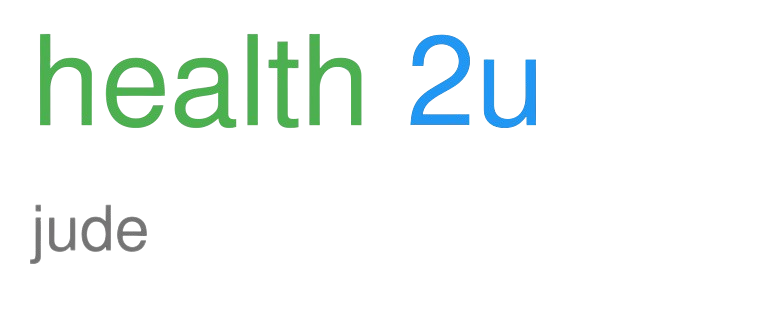Fitness at Home: Effective Workouts Without Equipment
The allure of a gym membership – the shiny machines, the motivating atmosphere – can be powerful. But what if you don’t have the time, money, or inclination to join a gym? The good news is, you absolutely don’t need expensive equipment or a dedicated space to achieve significant fitness gains. Bodyweight training, a cornerstone of functional fitness, allows you to build strength, improve endurance, and enhance overall well-being, all from the comfort of your home. This comprehensive guide explores the best home workouts without equipment, providing detailed instructions, variations, and crucial considerations for optimal results.
I. Understanding Bodyweight Training
Bodyweight training utilizes your own body mass as resistance. It’s a versatile and adaptable form of exercise, making it accessible to individuals of all fitness levels. Its benefits extend beyond simple muscle building:
- Increased Strength: Exercises like push-ups, squats, and planks build both upper and lower body strength effectively.
- Improved Endurance: Performing bodyweight exercises in circuits or with high repetitions challenges your cardiovascular system and improves stamina.
- Enhanced Flexibility & Mobility: Many bodyweight exercises naturally incorporate stretching and promote a greater range of motion.
- Functional Fitness: These movements mimic everyday activities, improving your ability to perform tasks with ease and efficiency.
- Accessibility & Convenience: Workout anytime, anywhere, without relying on external equipment or a specific location.
- Cost-Effective: No gym fees, equipment purchases, or travel time required.
II. The Core Bodyweight Exercises: Your Foundation
These foundational exercises are the building blocks of an effective home workout. Master these first, and you’ll have a solid base for progressing.
- Push-ups: Targets chest, shoulders, triceps, and core.
- Technique: Start in a plank position, hands shoulder-width apart, fingers pointing forward. Lower your body until your chest touches the floor (or as close as possible). Push back up to the starting position, keeping your core engaged.
- Variations:
- Incline Push-ups: Easier on your wrists; performed with hands on a raised surface (e.g., a wall, chair).
- Knee Push-ups: Easier; performed with knees on the floor.
- Decline Push-ups: More challenging; feet elevated on a surface.
- Diamond Push-ups: Targets triceps; hands close together, forming a diamond shape.
- Squats: Targets quadriceps, hamstrings, glutes, and core.
- Technique: Stand with feet shoulder-width apart, toes slightly outward. Lower your hips as if sitting in a chair, keeping your back straight and chest up. Aim to get your thighs parallel to the floor (or as close as possible). Push back up to the starting position.
- Variations:
- Air Squats: Standard squat.
- Goblet Squats: Hold a weight (e.g., a dumbbell, water bottle) in front of your chest.
- Jump Squats: Explosively jump upwards at the top of the squat.
- Pistol Squats: Advanced; requires significant balance and strength; perform one-legged squats.
- Lunges: Targets quadriceps, hamstrings, glutes, and core.
- Technique: Step forward with one leg, lowering your body until both knees are bent at 90-degree angles. Your front knee should be aligned with your ankle, and your back knee should hover just above the floor. Push off your front foot to return to the starting position. Alternate legs.
- Variations:
- Forward Lunges: Standard lunges.
- Reverse Lunges: Step backward into the lunge.
- Walking Lunges: Alternate lunges, moving forward with each step.
- Lateral Lunges: Step sideways into the lunge.
- Planks: Targets core, shoulders, and back.
- Technique: Assume a push-up position, but with your forearms on the floor and elbows directly under your shoulders. Keep your body in a straight line from head to heels, engaging your core and glutes. Hold the position for as long as possible with good form.
- Variations:
- Forearm Plank: Standard plank.
- High Plank: Plank on your hands (similar to push-up starting position).
- Side Plank: Lie on your side, supporting your body weight on your forearm (or hand) and your feet.
- Plank with Arm or Leg Raise: Raise one arm or leg at a time while maintaining plank position.
- Crunches: Targets abdominal muscles.
- Technique: Lie on your back with knees bent and feet flat on the floor. Place your hands behind your head (or lightly touching your ears). Engage your core and lift your head and shoulders off the floor, keeping your lower back on the ground. Lower yourself back down slowly.
- Variations:
- Crunches: Standard crunch.
- Reverse Crunches: Lie on your back, legs bent in the air, and lift your hips off the floor.
- Bicycle Crunches: Alternate bringing your elbow to the opposite knee while cycling your legs.
III. Advanced Bodyweight Exercises and Progressions
Once you’ve mastered the foundational exercises, it’s time to challenge yourself further. This section explores more advanced movements that build on your existing strength and endurance.
- Pull-ups: Targets back, biceps, and core. Requires a pull-up bar.
- Technique: Grab the pull-up bar with an overhand grip, slightly wider than shoulder-width. Hang with arms fully extended. Engage your back muscles to pull your chest up towards the bar. Lower yourself slowly back down.
- Progression: If you can’t do a pull-up, use resistance bands to assist, or start with negative pull-ups (focusing on the lowering phase).
- Burpees: A full-body exercise that combines a squat, push-up, and jump.
- Technique: Start standing. Squat down, placing your hands on the floor. Kick your feet back into a push-up position. Perform a push-up. Kick your feet back towards your hands. Jump upwards, reaching your arms overhead.
- Mountain Climbers: Targets core, shoulders, and cardiovascular system.
- Technique: Start in a plank position. Bring one knee towards your chest, then quickly alternate legs, as if running in place.
- Hindu Push-ups: A dynamic push-up variation that works the shoulders, chest, and triceps, and improves flexibility.
- Technique: Start in a push-up position. Lower your body, arching your back and moving your chest towards the floor (cobra pose). Push back up and over, straightening your arms and extending your hips into an upward-facing dog position.
IV. Designing Effective Home Workouts
The key to success is a structured workout plan that incorporates a variety of exercises and promotes progressive overload (gradually increasing the difficulty over time).
- Workout Structure Options:
- Circuit Training: Perform a series of exercises back-to-back with minimal rest in between rounds. This is excellent for building endurance and burning calories.
- Supersets: Perform two exercises consecutively with no rest. This can target different muscle groups or the same muscle group for added intensity.
- Sets and Reps: Choose a target number of sets and repetitions for each exercise. Aim for 3-4 sets of 8-12 repetitions for strength and muscle building.
- Sample Workout Plans (Beginner, Intermediate, Advanced):
- Beginner:
- Warm-up: 5 minutes of jumping jacks, arm circles, and leg swings.
- Circuit: 10 repetitions of each exercise, rest for 60 seconds between circuits, perform 3 rounds:
- Push-ups (Incline/Knee if needed)
- Squats
- Lunges (Alternating legs)
- Plank (30 seconds hold)
- Crunches
- Cool-down: 5 minutes of stretching.
- Intermediate:
- Warm-up: 5 minutes of dynamic stretches.
- Circuit: 12-15 repetitions of each exercise, rest for 45 seconds between circuits, perform 3-4 rounds:
- Push-ups
- Jump Squats
- Reverse Lunges (Alternating legs)
- Side Plank (30 seconds each side)
- Bicycle Crunches
- Burpees (optional, for higher intensity)
- Cool-down: 5 minutes of stretching.
- Advanced:
- Warm-up: 5 minutes of dynamic stretches.
- Circuit: As many repetitions as possible (AMRAP) for 45 seconds, rest for 15 seconds between exercises, perform 3-4 rounds:
- Hindu Push-ups
- Pistol Squats (Alternating legs)
- Walking Lunges
- Plank with Arm or Leg Raises
- Mountain Climbers
- Cool-down: 5 minutes of stretching.
- Beginner:
- Important Considerations:
- Listen to Your Body: Don’t push yourself too hard, especially when starting. Rest when needed.
- Proper Form: Focus on maintaining good form throughout each exercise to prevent injuries. Watch videos and practice in front of a mirror.
- Progressive Overload: Gradually increase the difficulty of your workouts. This could mean adding more repetitions, sets, or decreasing rest times. Alternatively, progress to harder exercise variations.
- Consistency is Key: Aim to work out at least 3-4 times per week to see results.
- Nutrition and Hydration: Fuel your body with a balanced diet and drink plenty of water to support your fitness goals.
- Rest and Recovery: Allow your body adequate time to recover between workouts.
V. Optimizing Your Home Workout Environment
While equipment isn’t necessary, optimizing your workout space can significantly enhance your experience.
- Dedicated Space: Designate a specific area in your home for workouts. This helps to establish a routine and minimize distractions.
- Flooring: Consider using a yoga mat or exercise mat to provide cushioning and prevent slipping, especially on hard floors.
- Mirror: A full-length mirror allows you to monitor your form and make corrections.
- Music or Workout Videos: Choose music or workout videos that motivate and guide you through your workouts.
- Comfortable Clothing: Wear comfortable, breathable clothing that allows for a full range of motion.
- Proper Lighting and Ventilation: Ensure adequate lighting and ventilation for a comfortable workout environment.
By embracing bodyweight training and implementing these strategies, you can create an effective and sustainable home fitness routine, transforming your body and improving your overall well-being without relying on expensive equipment or a crowded gym. Remember that consistency, proper form, and progressive overload are the cornerstones of success.





